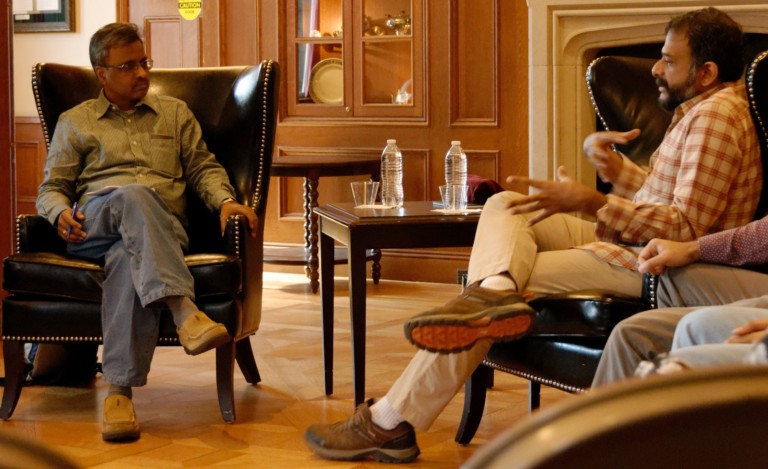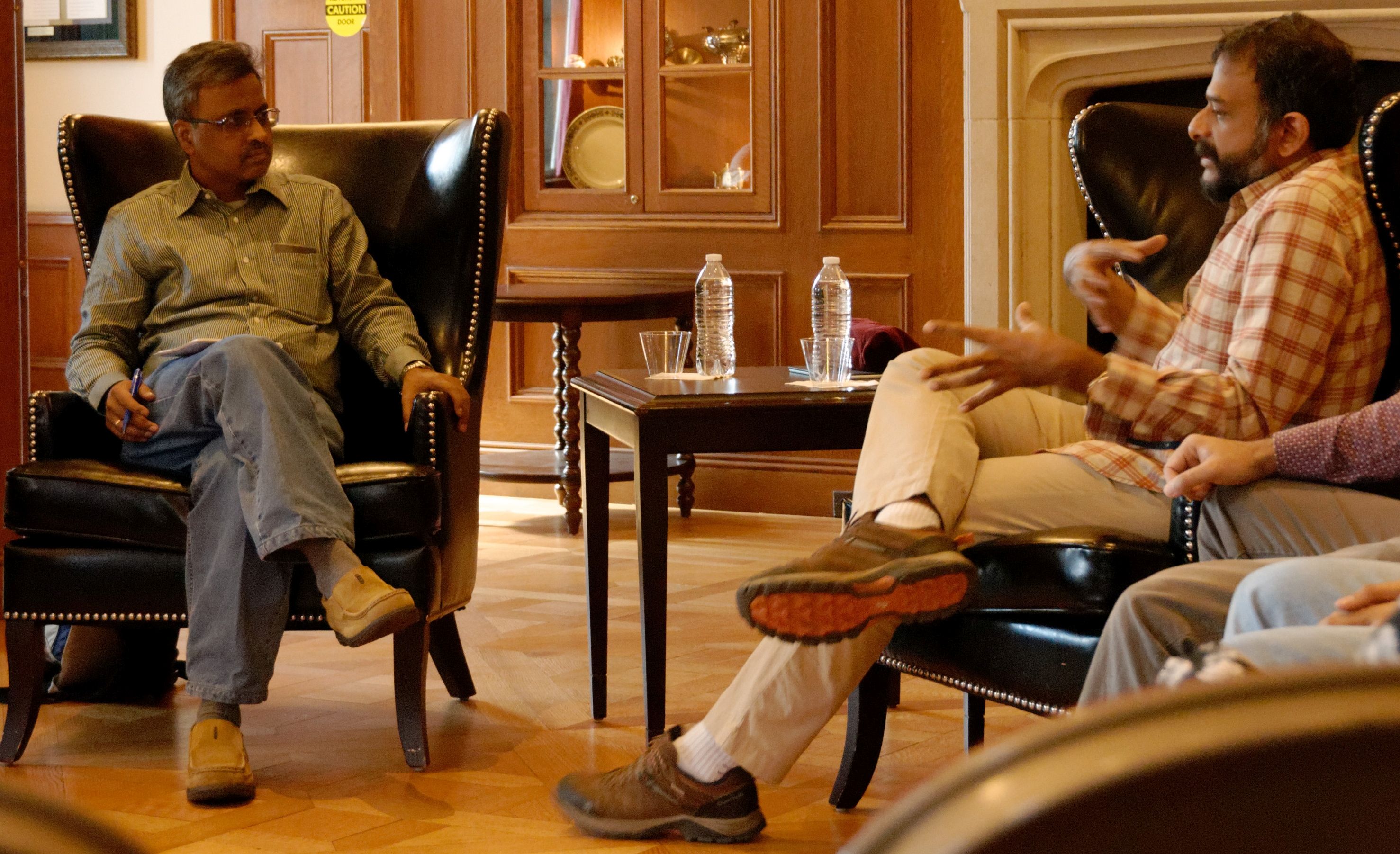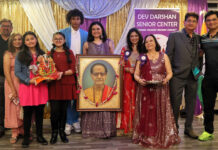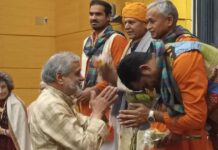 Sunthar Visuvalingam
Sunthar Visuvalingam
CHICAGO: Carnatic vocalist TM Krishna concluded a two-day program at University of Chicago (UC) with his Oct. 15 lecture at its International House titled “Art, Politics, and Society: the role and responsibility of artists to right-wing nationalism and social/religious conflict.” He had earlier led a roundtable discussion moderated by his longtime interlocutor, Tamil cultural historian Prof. AR Venkatachalapathy, followed by an hour-long workshop with students from UC South Asia Music Ensemble.
Krishna’s fundamental thesis and starting point is the following paradox: whereas beauty in art is a delightful avenue to the short-lived experience of “detachment” or (self-) transcendence, the immediate contexts within which artistic genres are engendered, performed, transmitted, conserved are invariably conditioned, distorted by a restrictive, oppressive, ugly sense of identity. The problem is not so much with the artistic experience per se, but our inability to remain in the non-judgmental vulnerability of that precious moment and carry it over into our daily routines. The down-to-earth practice of an artistic tradition serves instead as a powerful vehicle to reaffirm the collective, exclusionary, identity of its host community.
The improvisational aesthetics and sophisticated techniques of the Carnatic music that he has inherited, internalized, mastered and now teaches is thus embedded in the entrenched brahmanical elitism that casts its ugly, divisive shadow across the political culture of the entire nation. Krishna’s most recent book ‘Reshaping Art’ explores the existential predicament of the artist from this vantage point.
The true vocation of the socially responsible artist is to inhabit and render explicit this inherent tension, even conflict, between the inner experience and outer context of the art form, by turning the former against the latter. Krishna demonstrated how this could be done the previous evening by turning his vocal recital into a “classical protest” to inaugurate UC’s “Music Without Boundaries” concert series.
Krishna sees “majoritarian rightwing Hindu nationalism”—a “cultural mechanism” that pits insiders (us) against outsiders (them), imposing a monolithic ‘unity’ on an otherwise diverse reality—as the political outgrowth of the exclusionary context of classical art that in turn coopts and reinforces the latter. This is the reigning discourse in India that even the myriad dissenting voices are obliged to accommodate and appropriate, to the extent of becoming complicit in this false notion of a national culture. He sought to demonstrate his thesis through the examples of Carnatic and Hindustani music, and Bharata Natyam.
Earlier maintained by two distinct social strata—temple courtesans (devadasi) with their associated lower-caste musical accompanists and Brahmins. By the late 1800s, Carnatic aesthetic tradition was taken over by the latter to be refashioned into a highbrow insular urban culture, governed by a rigorous moral code and (re-) centered around the purity of Thyagaraja’s (Rama-) bhakti. Devadasis were reduced to prostitutes, while their (ritual) dance (sadir) was transformed into ‘ancient’ Bharata Natyam.
By appropriating the Carnatic raga-classification (melakarta) of the Tamil brahmins and adapting it into his North Indian system—that has “thankfully” never taken hold—theoretician VN Bhatkande intellectually marginalized the crucial role of Muslim genealogies (gharana) in the proliferation and maintenance of schools and styles of Hindustani music.
VD Paluskar sought to ‘nationalize’ the latter by successfully introducing bhajan (prayer) and bhakti (devotion) into concerts to “unite India.” Institution of Gandharva Mahavidyalaya and consolidation of power in urban centers such as Pune and Mumbai have resulted in the Hindustani vocal music being disproportionately dominated by Marathi brahmins.
By the 1980s, even ‘liberals’ professing to fight against discriminatory identity politics had so internalized this now dominant pre-Independence cultural constructs that, emotionally blinded, they enthusiastically promoted these henceforth ‘naturalized’ and ‘immemorial’ aesthetic ‘traditions’ abroad through Festivals of India. From this historical perspective, “rightwing nationalism” or “RSS DNA” is not confined to the Hindutva movement but has become the shared foundation of our social discourse, including those who are so vociferously condemning the Rashtriya Swayamsevak Sangh (RSS) today.
Indicting “nationalism” as the root cause of social and religious conflict rather than constituting a unifying force, Krishna was quick to emphasize the explosion today of such rightwing ideologies across the globe, so much so that he asked whether (Trump’s) United States was really a better place to be in than India. However, he conceded that such categorizing (race, religion, caste, etc.) of self and other—starting with gender—to negotiate power-relations is fundamental to our common human nature.
Openly acknowledging his own conflicted position within this inescapable dynamic of social exclusion and artistic freedom, Krishna ends up caught in an ultimately self-defeating logic. Post-Enlightenment thought assumes that we all share a basic ‘human’ nature upon which have been imposed such artificial divisions that pit us against each other. Religious traditions, including the brahmanical, assume on the contrary that we remain animals until molded by normative (ritual, moral, etc.) practices into humans proper. Culture, including music, is precisely that which elevates us towards possible self-transcendence.
Video recordings of lecture and roundtable are accessible respectively at:







